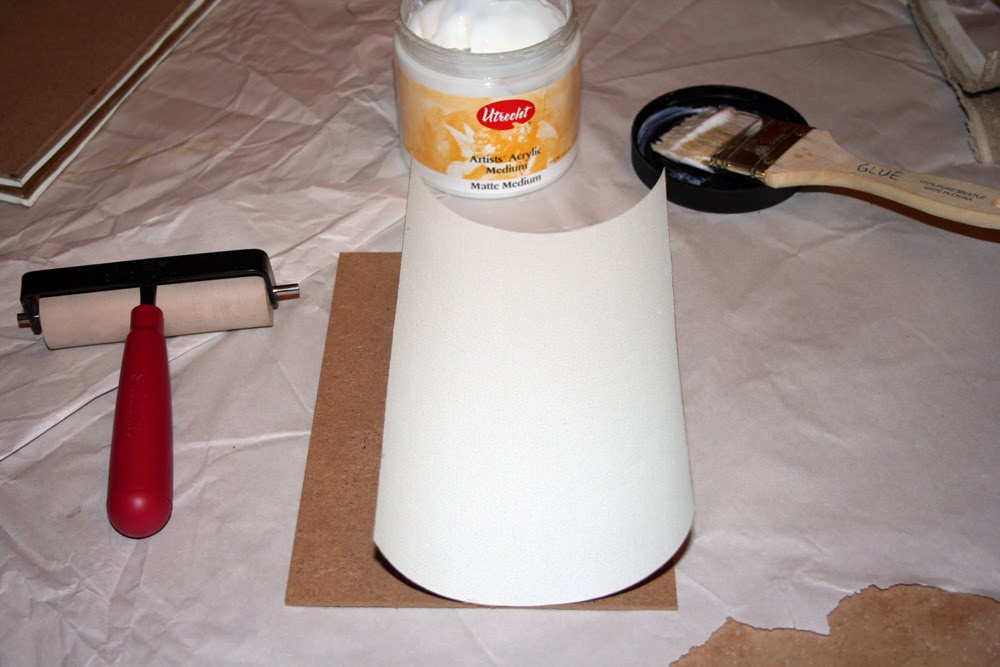The Plein Air Convention in Monterey is coming up soon, and I've found myself making more linen panels in preparation. Here's a simple tutorial for making your own.
Many companies make some great linen panels, but they're too expensive for me. While the initial cost of buying a full roll of linen can be steep, making your own panels will be much less expensive in the long run.
Materials:
-Claussen's Oil Primed Linen (I use the #12 style)
-MDF or Masonite boards, cut to size (Having a couple small sizes helps you minimize scraps)
-Matte Medium, Miracle Muck Glue, or Elmer's Glue
-Cheap bristle brush
-Soft Rubber Brayer (Speedball brand. Used for printmaking)
-Rubberized Cutting Mat
-Sandpaper
-X-Acto Knife
-Pencil
-Scissors
Begin by lightly sanding your wooden panels. I like to make sure the edges are cleaned up and any burs are removed. Run the sandpaper across the side to be glued as well, to provide better adhesion for the glue.
Next, lay your roll of linen out on the floor, primed side up. Place the panels on top, and trace all around with a pencil. Make a little bit of extra room all the way around (1/8 of an inch is plenty). Cut out with scissors.
Next, gather your brush, medium/glue, and brayer.
Brush a thin layer of glue all over the wood. It took me a dozen panels to find out the magic amout of glue to use. Too little glue and the linen won't stick. Too much glue and it oozes out the sides and makes a mess.
With the panel coated in glue, carefully place the unprimed side of the linen down on to the panel. Try to line it up correctly on the first try. If you peel it up you will have to put down some more glue.
Take the brayer and firmly press down, rolling from the center outwards. Make sure to really get the edges to stick down. If you don't use enough glue and pressure the edges have a habit of peeling away from the board.
Flip your panel upside-down and inspect the edge. Make sure the linen is not peeling up anywhere.
Notice a little seam of glue on the edge. The panel below has just the right amount of glue. The edges will stick down well. Too much glue will ooze out and make a big mess on your working surface (and potentially get on the primed side of your linen panels!)
Take all of your panels at this stage and stack the like-sizes together. Place a couple heavy books on each stack. Let this sit overnight to dry.
Once the panels have dried, take your rubberized cutting mat and an X-Acto knife. Place the panel upside down on the cutting mat. With firm pressure and using the edge of the wood panel as a guide, cut away all the extra linen.
Panels can sometimes warp very slightly, because the linen can shrink as it dries. If this happens, place the panels face-to-face and leave underneath a couple heavy books for a few days. Time is better than pressure when it comes to de-warping wood.
After trimming off the extra linen, inspect each panel. If you have an edge or corner peel up because you didn't use enough glue, it's ok! Peel the corner back just a little bit, and put on some extra glue with a small brush or palette knife. Run the brayer over the trouble spot a couple more times until it really sticks down. Leave the panel under a book for another day.
And there you have it. Hopefully this little tutorial can help you make some nice panels. Happy painting!


















































